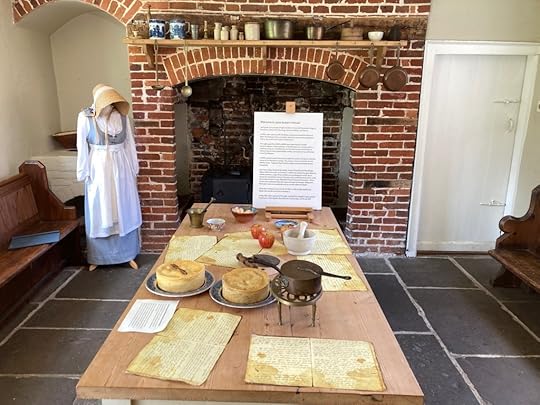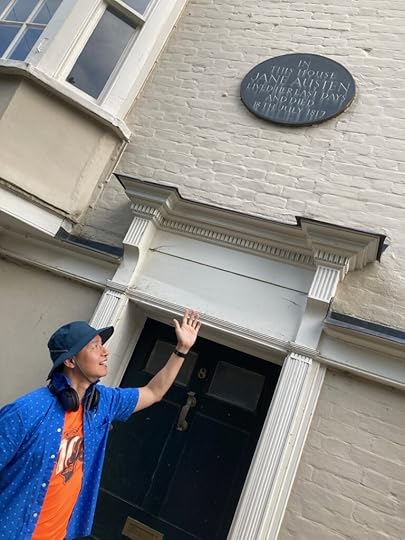The Challenge of Interpreting Character and Action in Sense and Sensibility, by L. Bao Bui
A recent article appeared on The New York Post with the headline, “Gen Z Woman Floored by 35-Year-Old Man’s Text After First Date.” According to the article, the woman “was baffled by the text he sent her the next day.” She proceeded to screenshot the text and share it online, where it amassed over half-a-million views and ignited a spirited debate. One comment posted in response described the man’s text as “too sterile.”
The text in question read, “Hey, had fun last night. Have a good day.” The woman professed confusion over the intention and character of its author. The Post writes that the man’s “millennial texting style made her unable to tell if he wanted to see her again.” In the Gen Z woman’s own words, “I just can’t read him and I really, really want to go on a second date.” Interestingly, the Post article does not indicate if the woman actually communicated to the man what she had already made known to anyone who had access to an electronic device, or who reads the Post.
This Gen Z dater’s experience and her confusion over how her date really felt about her echoes a similar dilemma that vexes Elinor and Marianne Dashwood in Sense and Sensibility. The themes of self-reflection, the struggles to perceive another person’s character and intentions accurately, and the artful schemes devised to deceive and mislead others permeate the Austen canon.

Jane Austen’s House Museum, Chawton
(From Sarah: This is the twenty-sixth guest post in “A Summer Party for Sense and Sensibility,” which began on June 20th and will continue through to the end of the summer. You can find all the contributions to the blog series here . I hope you’ll join the conversations about S&S in the comments here and on social media: #senseandsensibilitysummer. Thanks for celebrating Jane Austen’s first published novel with us!)
In Chapter 4 of Sense and Sensibility, Elinor says of Edward Ferrars, her seemingly reluctant suitor, “his person can hardly be called handsome, till the expression of his eyes, which are uncommonly good, and the general sweetness of his countenance, is perceived.” The first courtship to take center stage in the novel unquestionably has its sweetness, and yet it remains inscrutable to both Elinor and readers. Says Elinor, “I am by no means assured of his regard for me. There are moments when the extent of it seems doubtful” (Volume 1, Chapter 4).
Indeed, throughout the opening chapters the words “seem” and “perceive” crop up multiple times in regards to Edward’s conduct towards Elinor, and to how others around him interpret his actions. Three successive paragraphs at the end of Chapter 4 show how Austen artfully plays with the concept of perception and certainty. In the first paragraph, Elinor “knew” that Edward’s mother would object to him marrying a woman of very modest fortune. Mrs. Dashwood and Marianne are “certain” of Edward’s intention to woo and marry Elinor, but Elinor herself is “doubtful” of “the nature of his regard.”
How ironic, then, that Elinor questions the existence of Edward’s attachment to her, for in the very next paragraph, Austen mentions that that same attachment “was enough, when perceived by” Edward’s sister, Mrs. Ferrars, “to make her uncivil” and determined to forcefully nip the courtship in the bud (Volume 1, Chapter 4). She masks her cruelty behind the veneer of respectability and pragmatism. Likewise, her brother Edward must mask his internal turmoil and his divided loyalties. After all, none must know of his secret engagement to Lucy Steele, an arrangement he now deeply regrets and wishes he could undo. Thus, despite their stark differences in personalities and intentions, both siblings project a public image at odds with their true nature (in the case of the sister) or desires (the brother).

Chawton House
Across two paragraphs, Austen reveals how the four Dashwood women contend with two relatives (by marriage) who are unreliable at a time when the Dashwood women are staring genteel poverty in the face. But then, in the next paragraph, Austen shifts to another familial relation of the Dashwoods, and another challenge to the Dashwoods’ (and our) ability to perceive the true nature and intentions of a person:
. . . a letter was delivered . . . which contained a proposal particularly well timed. It was the offer of a small house, on very easy terms, belonging to a relation of her own, a gentleman of consequence and property. . . . The letter was from this gentleman himself, and written in the true spirit of friendly accommodation. . . . He earnestly pressed her . . . to come with her daughters to Barton Park . . . from whence she might judge, herself, whether Barton Cottage . . . could, by any alteration, be made comfortable to her. He seem really anxious to accommodate them; and the whole of his letter was written in so friendly a style as could not fail of giving pleasure.” (Volume 1, Chapter 4)
Edward and his sister appear and act in the flesh and both prove unreliable. In contrast, Sir John has only his epistolary surrogate, in form of his letter, to make his case before the Dashwood women and the audience. Yet the letter, as perceived by the recipient, is judged to be “true” and “earnest,” an appraisal that proves correct. The word “seem” as used in this paragraph does not set up the Dashwood women for later disappointment. When Sir John does appear in Chapter 6, Austen writes that his “countenance was thoroughly good-humoured; and his manners were as friendly as the style of his letter.”
What’s more, his “kindness was not confined to words; for within an hour after he left them, a large basket full of garden stuff and fruit arrived from the park, which was followed before the end of the day by a present of game” (Volume 1, Chapter 6). For the Dashwood women, as for the readers, these immediate and substantial gifts of Sir John and his earnest attention to the comfort of his new tenants stand in sharp contrast to the cold and unkind treatment the Dashwoods had received from their half-brother and his wife. Indeed, later in Chapters 6 and 7, Austen attributes to him “frankness and warmth” (Volume 1, Chapter 6) and “the real satisfaction of a good heart” (Volume 1, Chapter 7).

The kitchen at Jane Austen’s House Museum
Austen’s heroines have the monumental task of assessing their suitors correctly. Much of the delight of reading Austen derives from how we and the protagonists learn to judge character, including their own, with a sharper eye. And yet, Austen shows how formidable that task stands, and how many roadblocks, false assumptions, and misleading impressions lie in the way of a truthful appraisal. The full powers of flesh-and-blood observation, in real time over the course of weeks, may prove insufficient; a single letter reveals and reflects the true character and intentions of its author. Even when the Ferrars siblings stay at Norland, the Dashwood women do not realize how deceptive both Fanny and Edward can be. Sir John’s mode of epistolary communication achieves its purpose; it persuades the Dashwood women to put their lives under his care, and he delivers, with genuine kindness that goes beyond “friendly accommodation.” The mode of communication, whether it takes the form of a short phone text or Sir John’s written letter or Fanny’s spoken words, may not matter at all. What matters, indeed, is the presence of “a good heart,” and some characters have it, and some, not at all.

Quotations are from the Barnes and Noble Classics edition of Sense and Sensibility (New York, 2004).
L. Bao Bui he received his doctorate in history from the University of Illinois, Urbana-Champaign, in 2016. His dissertation examined personal privacy and letter-writing during the American Civil War. He is currently working on a book manuscript titled, Mail Intimacy: Gender Roles and Epistolary Privacy during the Civil War. He holds degrees in political science from the University of California, Berkeley, and in English literature from Pomona College. He has taught courses in food politics, military history, foreign relations history, women and gender history, human rights, Jane Austen, and film and media studies, in addition to survey courses in American and world history. An avid tango dancer, he has visited communities of Argentine tango dancers throughout the world.

Bao at Winchester Cathedral
All the photos are from Bao’s visit to Winchester and to Alton and Chawton in August, which was, he says, “the fulfillment of a long-standing obligation to Austen to visit her resting place.” Bao says that when he teaches Jane Austen at UIC, “In the first week of class, many of my students write that they read Austen because her novels provide them with a novel way to view the modern world that they live in.”

If you enjoyed this post, I hope you’ll consider recommending it to a friend. If you aren’t yet a subscriber, please sign up to receive future guest posts in “A Summer Party for Sense and Sensibility.” The next post, “On the Road with Elinor and Marianne,” is by Cheryl Bell.
Here are the links to the last two posts, in case you missed them:
What Did Lucy Steele? by Diana Birchall
The Real Romantic? Marianne Dashwood and Fanny Price, by Theresa Kenney

Read more about my books, including Jane Austen’s Philosophy of the Virtues and Jane Austen and the North Atlantic, here.



